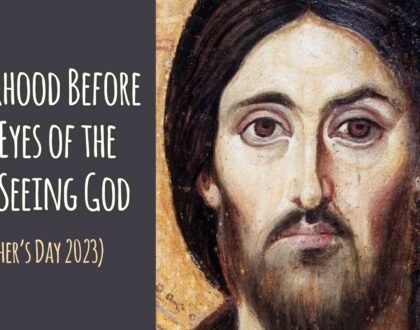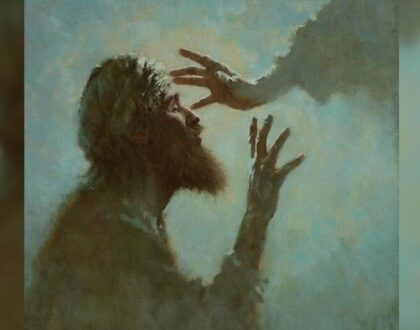John 7:53-8:11

by Pastor Gene
They went each to his own house, 1 but Jesus went to the Mount of Olives. 2 Early in the morning he came again to the temple. All the people came to him, and he sat down and taught them. 3 The scribes and the Pharisees brought a woman who had been caught in adultery, and placing her in the midst 4 they said to him, “Teacher, this woman has been caught in the act of adultery. 5 Now in the Law, Moses commanded us to stone such women. So what do you say?” 6 This they said to test him, that they might have some charge to bring against him. Jesus bent down and wrote with his finger on the ground. 7 And as they continued to ask him, he stood up and said to them, “Let him who is without sin among you be the first to throw a stone at her.” 8 And once more he bent down and wrote on the ground. 9 But when they heard it, they went away one by one, beginning with the older ones, and Jesus was left alone with the woman standing before him. 10 Jesus stood up and said to her, “Woman, where are they? Has no one condemned you?” 11 She said, “No one, Lord.” And Jesus said, “Neither do I condemn you; go, and from now on sin no more.”
- Last week we looked at some Old Testament examples of a significant phrase: ‘the finger of God.’ But now we come to Jesus and, in our story, John is careful to point out that Jesus “wrote with His finger on the ground.” Interestingly enough, there are several New Testament passages that emphasize the works Jesus did with His finger. Consider Luke 11:14-23 and Mark 7:31-37. Why do you think Jesus did what He did in the way that He did them? How is the ‘finger of God’ emphasized in these passages? “It is a finger that …” does what? How about in our passage? What does the finger of God do there?
- I’ve suggested that, in bringing this accusation, these scribes and Pharisees had in effect put three things on trial: (1) this woman, (2) the Law itself, and (3) the very nature of God. Do you agree? How is this woman on trial? The Law of Moses? The very nature (or character) of God? It might help to ponder John 1:17.
- In 8:9-11, Jesus’ treatment of this woman is the definition of mercy: “Neither do I condemn you; go, and from now on sin no more.” What is mercy? How is it different than justice? Why is the first part of Jesus’ statement (before the semi-colon) important to the second part?
- All believers have received mercy from the Lord. But what does God expect back from those who have been ‘kissed by mercy’? Ponder and discuss these important verses: Luke 6:36, Matthew 5:7, James 3:17, Matthew 9:13 and Matthew 23:23. What do these verses teach us about mercy? What do they teach us about God’s expectation of us as Jesus-followers? What to they teach us about ourselves?
- When God instructed Moses to construct the Tabernacle the most important piece of furniture in it would be the Ark of the Covenant. It would feature two cherubim, fashioned from pure gold looking down upon a kapporeth – a seat of mercy. Why a seat of mercy? Read Exodus 25:17-22. What is so remarkable about this imagery? Where does God tell Moses He would meet with him?
- Read Micah 6:8, in the King James Version, if possible (it has the best rendering of this verse). What is God asking of us? Isn’t “require” a strong word? Discuss each of the three things Micah lists. How are you doing with each of these? Need to talk with Jesus about something?
Recommended Posts

Reflection Questions: Fatherhood Before the Eyes of the All-Seeing God (Father’s Day 2024)
June 16, 2024


